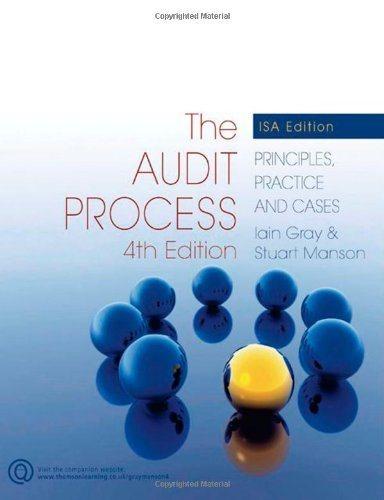Question
As you would expect, all of those expense budgets (direct materials, direct labor, etc.) will have an impact on our cash disbursements. Likewise, our sales
As you would expect, all of those expense budgets (direct materials, direct labor, etc.) will have an impact on our cash disbursements.
Likewise, our sales budget will determine our cash receipts budget. This is also called our cash collections budget.
However, there are a couple of other consideration in our cash receipts. First, what percentage of our sales are cash sales and what percentage of our sales are sold on accounts receivable. Secondly, for those sales on accounts receivable, what is our historic collection pattern? This is, what percentage of our credit sales are paid within 30 days from the invoice date, what percentage is paid between 31 days and 60 days, what percentage is paid between 61 days and 90 days, and what percentage is paid after 90 days?
This is the aging of accounts receivable, a topic that we study in Financial Accounting in the chapter on Accounts Receivable.
As we can see, we might have a sale in February, but not get paid for it (cash received) until June. So for credit sales, we see a lag time between the month of sale and the receipt of cash.
For the purpose of a cash receipts budget, we are not primarily thinking terms of sales in a month, but we see the amount of cash received in a month comes from multiple months. That cash received will come from sales in various months.
As an example, lets assume sales are as follows:
October 2010 - 75,000
November 2010 - 90,000
December 2010 - 100,000
January 2011 - 90,000
February 2011 - 100,000
March - 2011 - 110,000
April - 2011 - 120,000
May - 2011 - 130,000
Lets further assume as we look to project cash receipts for May that cash sales are 10% of total sales for each month. And we expect the following aging pattern to remain constant for credit sales;
Invoices Paid Within 30 day 75%
Invoices Paid Between 31 and 60 days 15%
Invoices Paid Between 61 and 90 days 7%
Invoices Paid Between 91 and 120 days 3%
With all of this, what is our forecast of cash receipts expected in May? First, lets identify the sources of cash for May, that is, from what sales will the cash be received.
First, we will have cash sale in May, which are 10% of May total sales.
Next, we will have 75% of April credit sales,
Then, we will have 15% of March credit sales.
Then we will have 7% of February credit sales.
And lastly, we have 3% of January credit sales.
Yes, that is a lot of calculations just to find one months cash receipts, but that the process we go through.
So now lets put some numbers to it for the forecasted May cash receipts.
13,000 May cash sales 10% of $130,000.
81,000 April credit sales ($120,000 x 90%) x 75%
14,850 March credit sales ($110,000 x 90%) x 15%
6,300 February credit sales ($100,000 x 90%) x 7%
2,430 January credit sales ($90,000 x 90%) x 3%
So our total budgeted cash receipts for May are $117,580. Please note that is this problem, we have five sources of cash receipts in May. Or another way to say it, sales from 5 different months are paid for in May. Also please note that the number of sources (months) you have in a problem will be based on the AR aging historical schedule given to you in the problem.
We need to do this for each month in the year to forecast if we will have enough cash on hand to cover our cash disbursements. When we combine the cash receipts budget with the cash disbursements budget, we then cash see predicted cash shortages. When we see a predicted cash shortage, it is our job. It is our job to locate additional funds to cover the cash shortage.
You can expect a cash receipts budgeting problem on the next exam. So get help you ready for it, you will find in Module 3 a file labelled Ch09 Cash Collections Practice Prob Master 2016-11.xlsx This is an Excel file. Please use your Excel skills to complete it, or you can print it off and do it by hand.
Step by Step Solution
There are 3 Steps involved in it
Step: 1

Get Instant Access to Expert-Tailored Solutions
See step-by-step solutions with expert insights and AI powered tools for academic success
Step: 2

Step: 3

Ace Your Homework with AI
Get the answers you need in no time with our AI-driven, step-by-step assistance
Get Started


